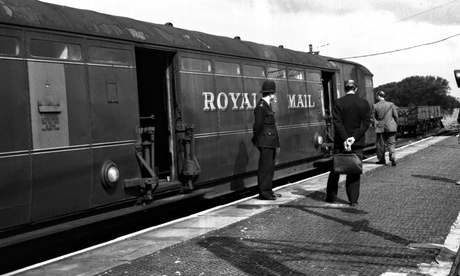
A documentary due to be released next month suggests that the Catholic church in Ireland was the likely beneficiary of hundreds of thousands of pounds stolen by the Great Train Robbery.
It also claims to solve one of the mysteries that dogged investigators at the time – the identity of the infamous "Ulsterman" credited with being the inside man at Royal Mail.
The film-makers claim the donation was made by a god-fearing Post Office worker who was a key player in the 1963 robbery of £2.6m from Royal Mail. It claims the devout, church-going Ulsterman died without his identity ever being revealed.
In the film, A Tale of Two Thieves, the train robber, Gordon Goody, now 84 and living in Spain with his Spanish partner, Maria, identifies the Ulsterman, or the Irishman, as he is sometimes known, as a Post Office worker based in Manchester who told him and the late Buster Edwards which train to rob.
Goody describes how the three men met in Finsbury Park, north London, and received the inside information that helped them carry out the robbery.
The identity of the Ulsterman has been a factor speculated on by true crime anoraks over the 51 years since the date of the robbery. Like the fate of Lord Lucan and that of the kidnapped racehorse Shergar, there have been almost as many theories as there were pilfered banknotes.
The film-makers, who employed Ariel Bruce, an independent social worker and specialist in tracing people, to help track down the likely suspect, say the true identity is now known and will be revealed just before the launch of the film.
The Ulsterman attended church every week and the film-makers and Goody have come to the conclusion that his share of about £135,000 was probably given to Catholic church charities. The Ulsterman retired in 1974 and left no will.
"We were modern Dick Turpins," says Goody in the film, in which he describes his progression from minor crime to the robbery. He claims that he only found out the Ulsterman's real name when he saw it inside his spectacles case. He says: "My instinct is that his money went to the church."
Looking at photos of the supposed inside man, he confirms that it is the person who tipped him off: "I've lived with the guy vaguely in my head for 50 years."
Goody, who is not well and uses an oxygen tank, says he is identifying the inside man now, after so many years, because he is "getting near the time when the shop is going to close".
The most infamous of the Great Train Robbers, Ronnie Biggs, died last year. He was jailed in 1964 for his part in the robbery but the following year scaled the wall of Wandsworth prison and then spent the next 36 years as a fugitive.
• This article was amended on 3 September 2014 to remove embargoed details and clarify a description of Ariel Bruce.

